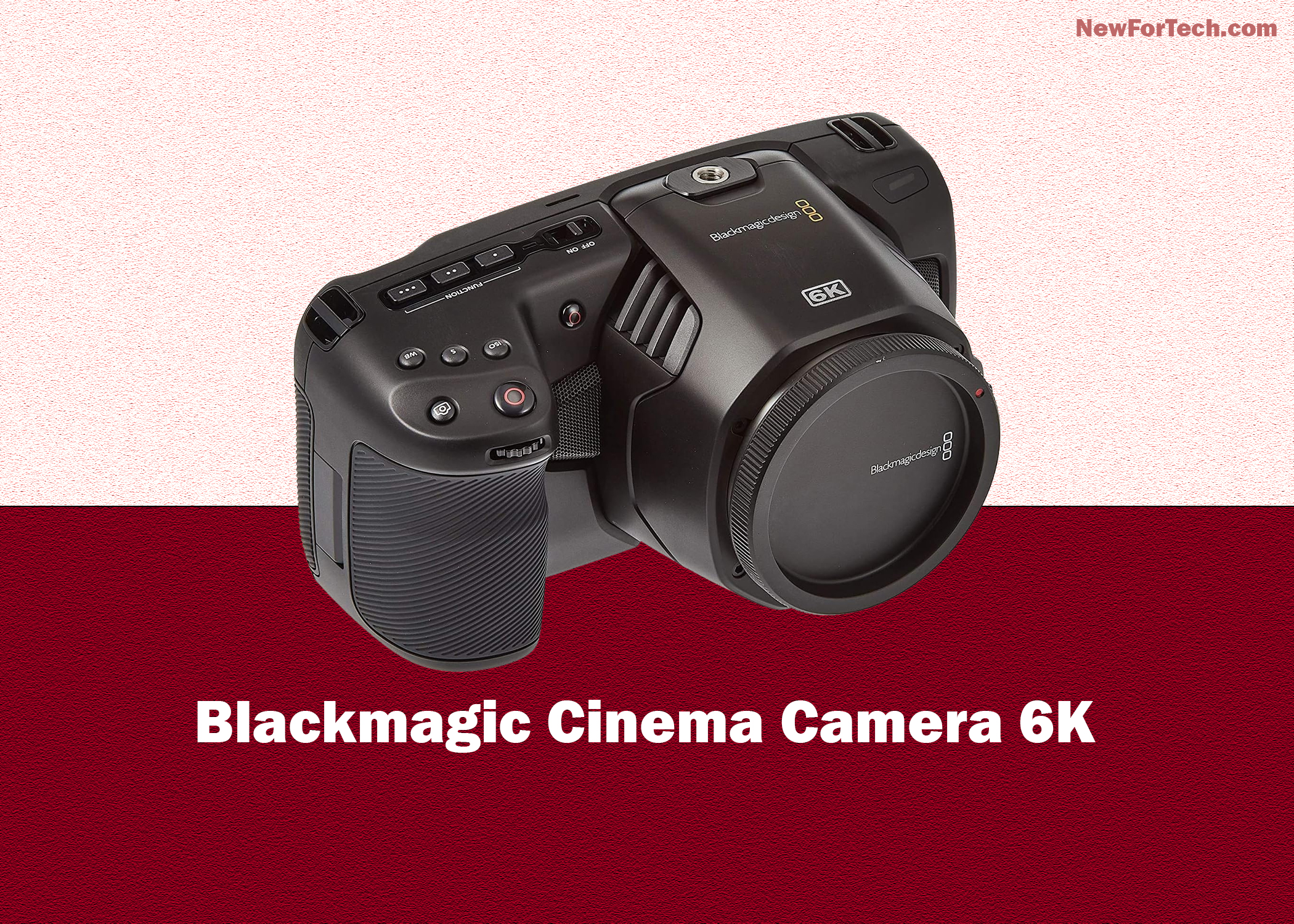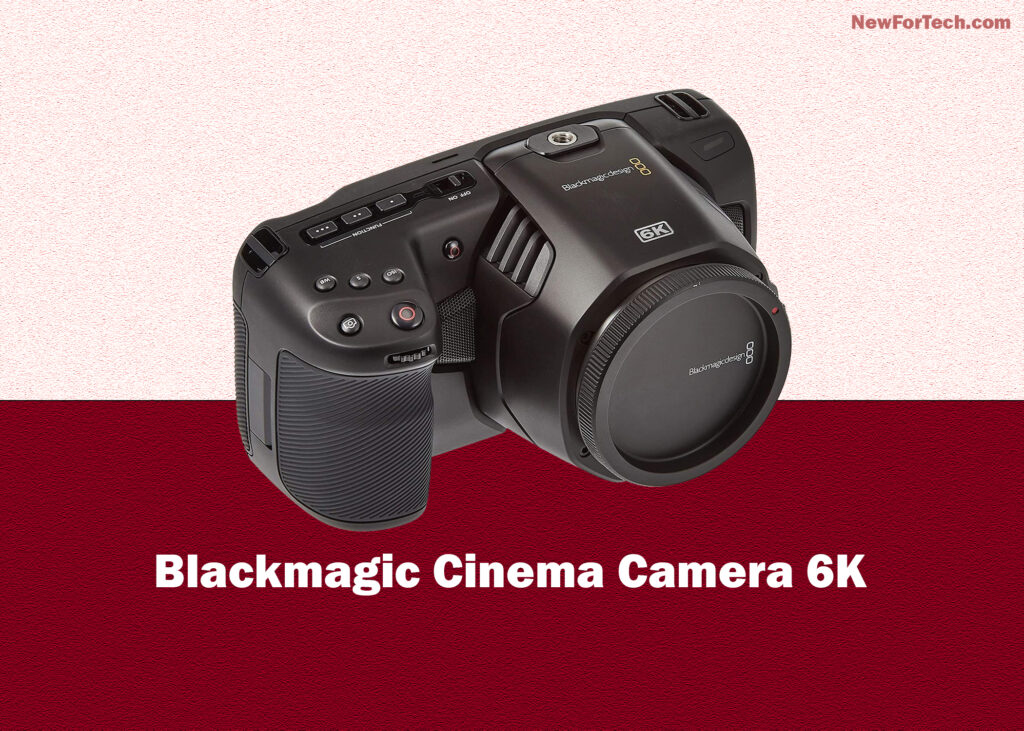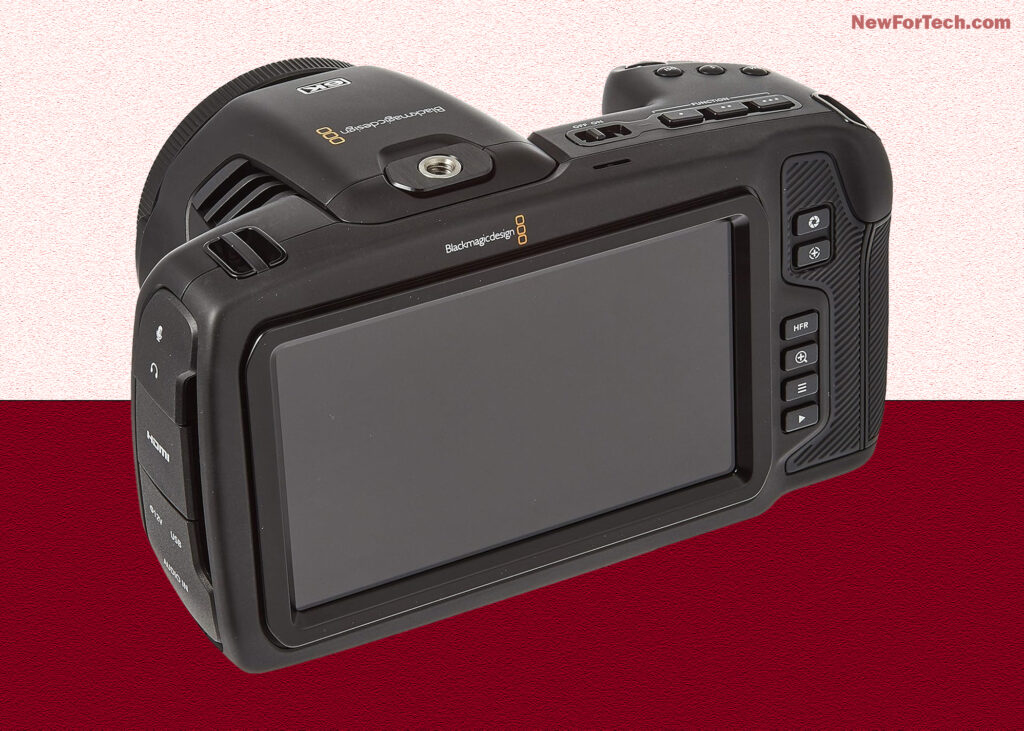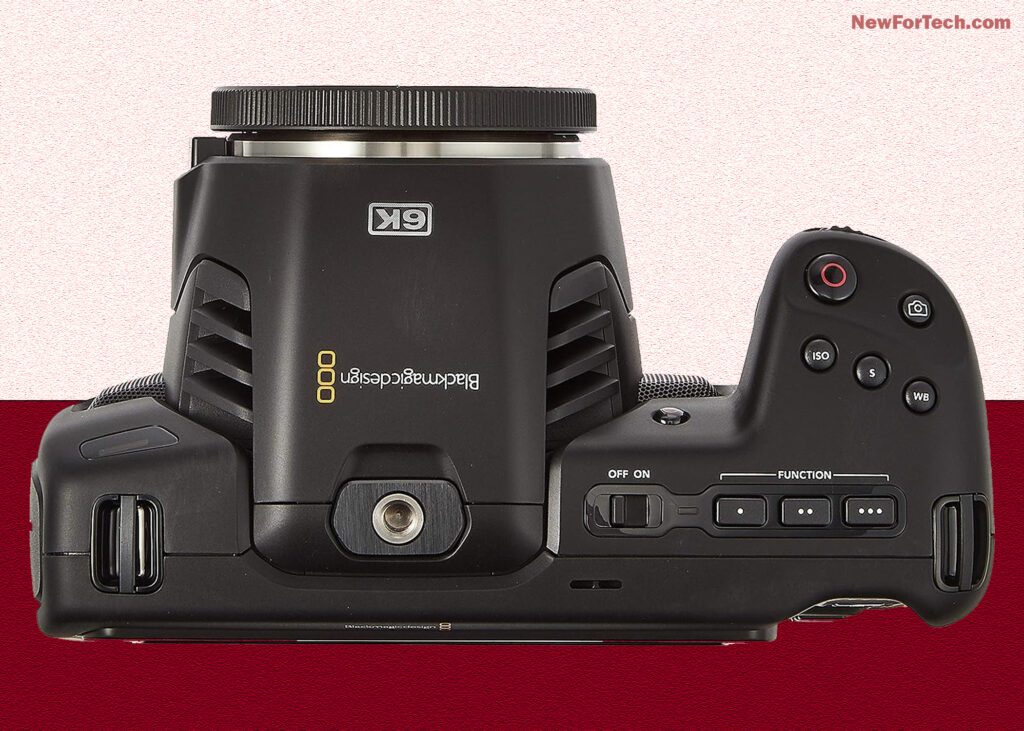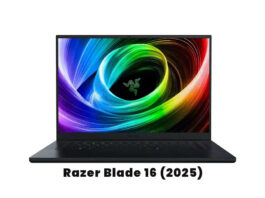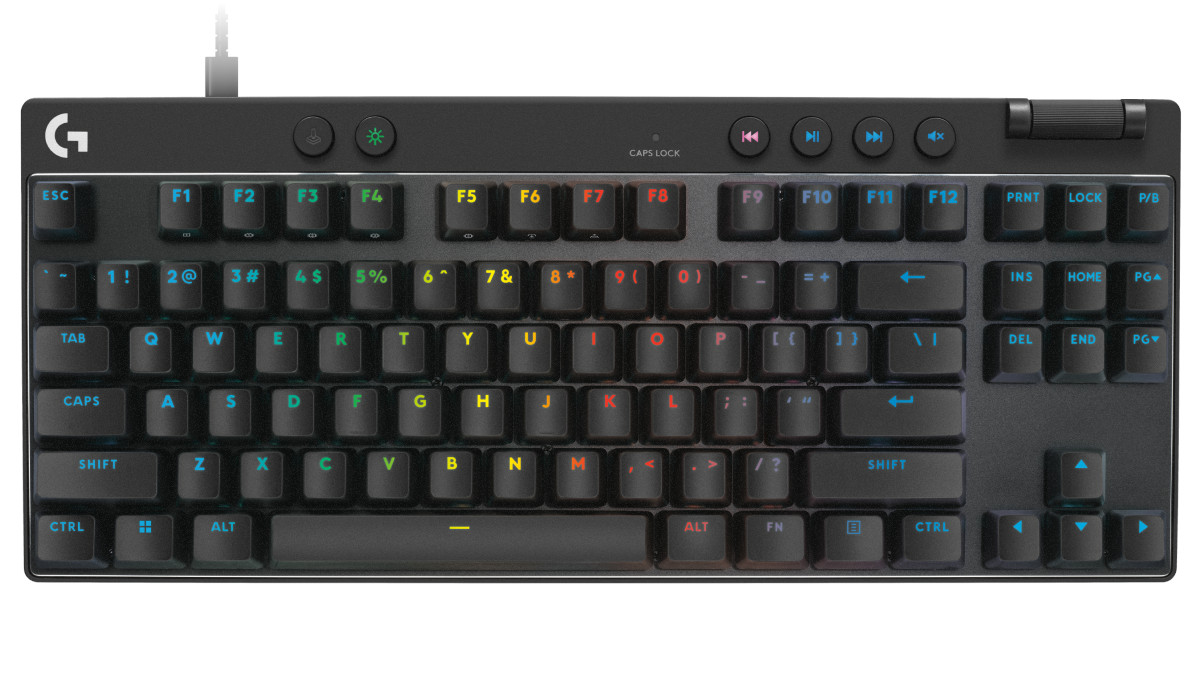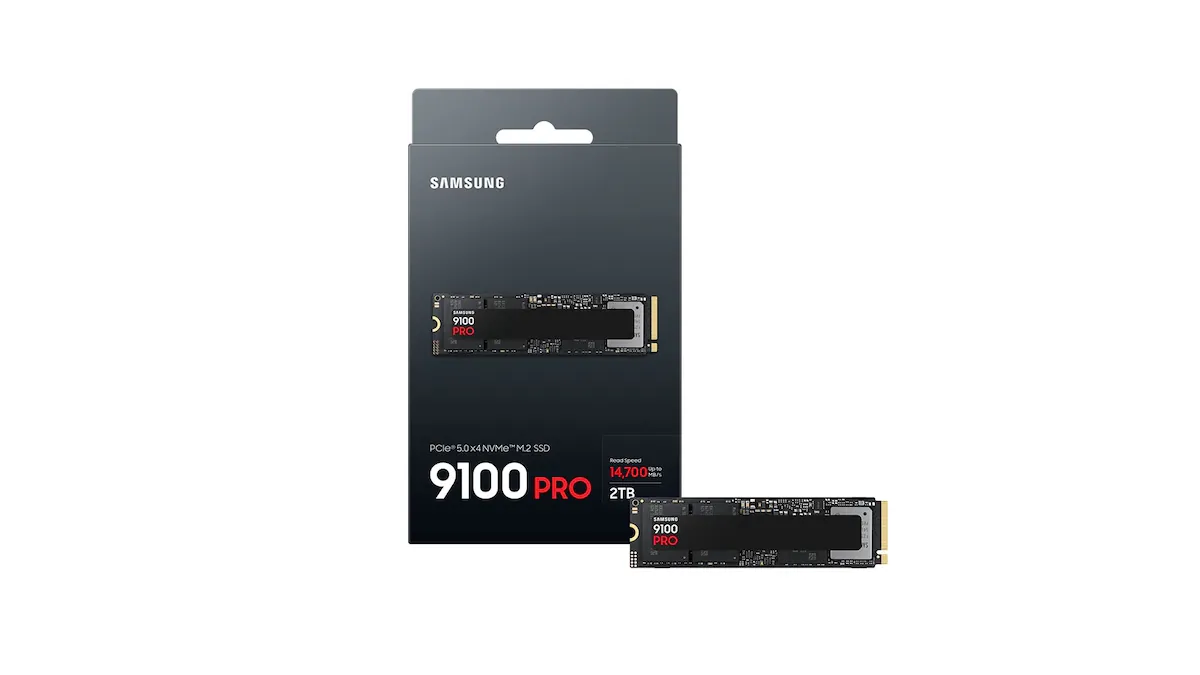Much like its forerunners, the Blackmagic Cinema Camera 6K caters to a specific audience. The conveniences typical in handheld mirrorless cameras are absent, demanding a substantial video editing acumen. Although not the go-to choice for the average consumer seeking user-friendly options, the 6K delivers raw footage.
Pros:
- Remarkable 6K quality in a compact, affordable body
- Versatile compatibility with a wide array of L-Mount lenses
- Post-production gyro data stabilization proves effective
Cons:
- Lacks built-in ND filters
- Absence of tracking AF and in-body image stabilization
- Achieving 120fps mandates a drop to 1080p resolution
Seasoned filmmakers will appreciate its streamlined workflow and impressive low-light performance.
Blackmagic champions accessibility in filmmaking gear, exemplified by the Pocket Cinema Camera series – a fusion of affordability, compactness, and user-friendly features with XLR mic inputs and Blackmagic’s RAW codec.
The latest addition, the Blackmagic Cinema Camera 6K, maintains the series’ design but introduces a full-frame sensor and L-Mount lens compatibility. These innovations promise enhanced low-light performance and the capability to shoot 6K footage ‘open gate,’ opening exciting new possibilities.
However, disappointments accompany the advancements. Unlike its Pro counterpart, the 6K lacks built-in ND filters, and its 4K at 120fps capability is downgraded to Full HD 1080p. Additionally, it lacks convenience features found in most mirrorless cameras, such as tracking autofocus and USB power supply.
For gear-savvy pros accustomed to manual focusing, these may be minor inconveniences. Yet, newcomers to filmmaking may find themselves challenged by the camera’s learning curve.
Despite its drawbacks, the Cinema Camera 6K offers substantial value for its price, especially in terms of image quality. Filmmakers prioritize this aspect over usability shortcomings, making it a top contender for its cost.
Unveiling the Blackmagic Cinema Camera 6K: Pricing and Availability
| Component | Price (USD) | Price (GBP) |
|---|---|---|
| Body Only | $2,595 | £2,199 |
| Optional EVF | $495 | £485 |
| Battery Grip | $149 | £135 |
The Blackmagic Cinema Camera 6K is currently on the market, priced at $2,595 / £2,199. This cost is remarkably reasonable for a full-frame cinema camera boasting 6K recording and top-notch XLR microphone inputs, aligning with the affordability seen in Blackmagic’s Cinema Camera range. Keep in mind, though, that an L-Mount lens and a CFexpress card are additional necessities.
Optional accessories include the $149 / £135 Battery Pro Grip, extending shooting time with an extra battery, and the $495 / £485 EVF, a high-quality electronic viewfinder.
Noteworthy is the inclusion of a license for Blackmagic’s DaVinci Resolve 18 Studio video editing software, a $295 / £260 value. This adds substantial value, especially for those seeking a premium editing platform.
Price Verdict: 4/5
Blackmagic Cinema Camera 6K: Unveiling Features and Performance
| Features | Details |
|---|---|
| CFexpress Type B card slot | Fast and capacious for robust onboard recording |
| 1x 3.5mm and 2x mini XLR microphone inputs | Offers versatile audio input options |
| Gyroscopic data for post-production stabilization | Enhances stability in footage editing |
The Cinema Camera 6K embraces the L-Mount, a 51.6mm-diameter bayonet system co-developed by Leica, Panasonic, and Sigma. Introduced in 2018, it already boasts over 50 full-frame lenses from the founding manufacturers, with adapters for third-party lenses, providing users with a wide range of creative possibilities.
Onboard recording relies on CFexpress Type B cards, offering speed and capacity. However, transferring footage requires a card reader, as the USB-C 3.1 port lacks direct connection support.
The USB port does support an external recorder for direct recording to an SSD or flash drive. While it can act as an Ethernet connection with the right adapter, a power supply via USB is absent. Constant power requires a 12V DC input, not the most user-friendly for newcomers.
Connectivity features include a full-size HDMI monitor output, a 3.5mm headphone input, and unique 2x Mini XLR microphone inputs, showcasing Blackmagic’s focus on cinema-centric features. Battery life is decent, but additional NP-F570s are advisable for longer shoots.
Notably, the Cinema Camera 6K lacks some usability features found in hybrid cameras. It lacks built-in image stabilization but embeds gyroscope data for post-production stabilization. Tracking autofocus is absent, and still shooting is basic, producing Blackmagic RAW files.
In summary, the Cinema Camera 6K offers a mix of advanced features and some usability drawbacks, earning a score of 3/5 in features and performance.
Blackmagic Cinema Camera 6K: A Closer Look at Design
| Specifications | Details |
|---|---|
| Size and Weight | 180 x 94 x 122mm, 1.135kg |
| Display | Tilting 5-inch 1080p touchscreen |
| Viewfinder | Optional, at an extra cost of $495 / £485 |
The Cinema Camera 6K’s design mirrors its Pocket predecessors, maintaining a DSLR-like form with a substantial hand grip and rear screen. Although wider and over a kilogram in weight, it remains user-friendly with a well-balanced body and an included thick camera strap.
Physical buttons, including customizable ones, are strategically placed for easy access. The 5-inch touchscreen boasts a filmmaker-oriented UI menu, offering convenient settings adjustments.
The absence of a built-in viewfinder distinguishes it from typical mirrorless models. A $495 / £485 optional viewfinder is available. Nevertheless, the bright, sharp, and sizable screen with 180º tilt functionality proves sufficient in most scenarios.
Additional design features include a front-facing tally lamp for recording indication and versatile tripod mounting points for accessories.
Despite some heft and the additional cost of a viewfinder, the Cinema Camera 6K scores 3.5/5 for its thoughtful design.
Blackmagic Cinema Camera 6K: Unveiling Image and Video Excellence
| Specifications | Details |
|---|---|
| Open Gate Recording | 6048 x 4032 resolution, 3:2 ratio, up to 36fps |
| Dual Native ISO | 400 and 3200, promising enhanced low-light performance |
| Blackmagic RAW Video Codec | Proprietary 12-bit codec, offering up to 13 stops of dynamic range |
The true prowess of the Blackmagic Cinema Camera 6K shines in its video performance. Utilizing a proprietary 12-bit Blackmagic RAW codec, it delivers remarkable results with up to 13 stops of dynamic range. The dual native ISO of 400 and 3200 enhances low-light footage, surpassing its predecessors.
Playing with various resolutions, frame rates, and ISO settings yielded consistently satisfying results. Post-processing in DaVinci Resolve 18 transformed initially flat footage into vibrant visuals. Nighttime shooting, illuminated only by lampposts, produced stunning results even for an amateur cinematographer.
The open gate recording option stands out, allowing flexible cropping for various platforms post-shooting, including the effortless creation of 9:16 social media content.
Video Quality Score: 5/5
Blackmagic Cinema Camera 6K: Test Scorecard
| Aspect | Notes | score |
|---|---|---|
| Price | Not cheap, but reasonable for specifications | 4/5 |
| Design | Larger than most mirrorless cameras | 3.5/5 |
| Features and Performance | Some missing usability features | 3/5 |
| Video Quality | Impeccable 12-bit clips with editing potential | 5/5 |
Should I Buy the Blackmagic Cinema Camera 6K?
Buy it if…
- You seek superb cinema footage from a handheld camera with an excellent 12-bit codec and workflow design.
- Capturing clean footage in low-light conditions is essential, thanks to the big sensor and dual native ISO.
- You are on a budget, as the camera’s price is low for its video specifications, and L-Mount lenses are affordable.
Don’t buy it if…
- You desire a video-first hybrid camera; the Cinema Camera 6K is unsuitable for still photography and lacks user-friendly features.
- You are unfamiliar with color grading and correction; optimal results require proper refinement in a video editing program.
- You expect a small, lightweight camera; adding accessories makes it bulky quickly.
Discover more from NewForTech
Subscribe to get the latest posts sent to your email.

